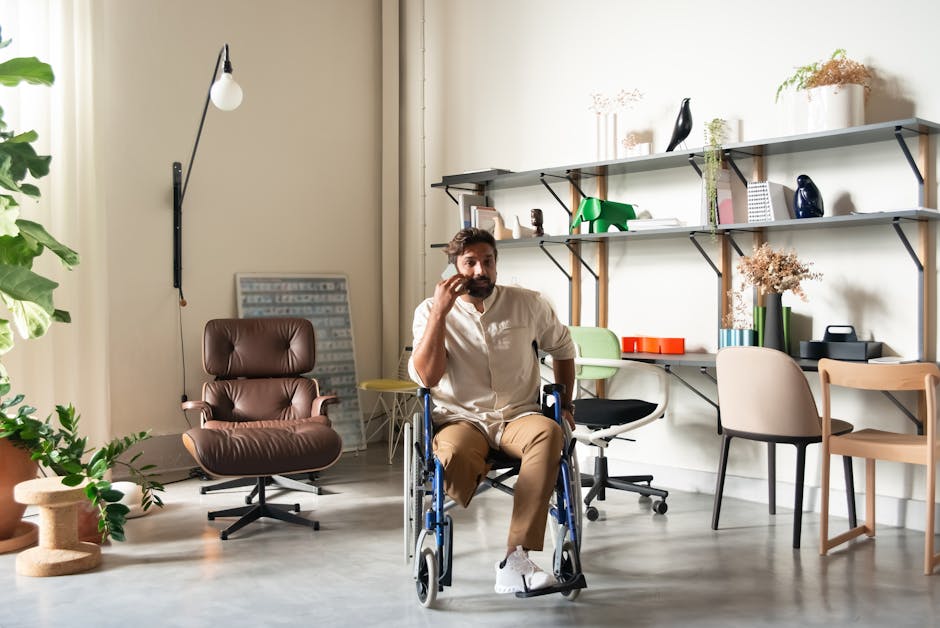Bridging the Gap: Aligning Digital and Physical Workplace Experiences
“As hybrid and remote work models gain popularity, organizations face the challenge of aligning digital and physical workplace experiences. This article explores strategies for creating an integrated workplace that leverages technology while maintaining the benefits of in-person collaboration, ultimately enhancing productivity and employee satisfaction. ”

The Evolution of the Modern Workplace
In today's rapidly changing business landscape, the concept of the workplace has undergone a significant transformation. The rise of hybrid and remote work models has blurred the lines between the digital and physical realms, presenting both opportunities and challenges for organizations worldwide.

As companies adapt to this new reality, the need to align digital and physical workplace experiences has become increasingly crucial. This alignment not only enhances productivity but also fosters a more engaging and satisfying work environment for employees.
The Digital Workplace: Empowering Remote Collaboration
The digital workplace has revolutionized the way we work, enabling seamless collaboration across geographical boundaries. With the advent of cloud-based technologies, video conferencing platforms, and project management tools, employees can now work efficiently from virtually anywhere.
Key components of the digital workplace include:
- Cloud-based productivity suites: Tools like Google Workspace and Microsoft 365 allow for real-time collaboration on documents, spreadsheets, and presentations.
- Communication platforms: Slack, Microsoft Teams, and other messaging apps facilitate instant communication and file sharing.
- Project management software: Platforms such as Asana, Trello, and Jira help teams organize tasks and track progress.
- Virtual meeting solutions: Zoom, Google Meet, and other video conferencing tools enable face-to-face interactions regardless of location.
By leveraging these digital tools, organizations can create a virtual environment that mimics the collaborative nature of a physical office space.
The Physical Workplace: Fostering In-Person Collaboration
While digital tools have transformed the way we work, the physical workplace still plays a crucial role in fostering creativity, building relationships, and nurturing company culture. A well-designed physical workspace can:
- Encourage spontaneous interactions and idea-sharing
- Provide dedicated spaces for focused work and collaborative sessions
- Reinforce company values and brand identity
- Offer amenities that promote employee well-being

Maximizing office space utilization has become increasingly important as organizations adapt to hybrid work models. By optimizing the physical workspace, companies can create an environment that complements and enhances the digital experience.
Bridging the Gap: Strategies for Alignment
To create a truly integrated workplace experience, organizations must focus on aligning their digital and physical environments. Here are some key strategies to achieve this alignment:
1. Implement Smart Office Technologies
Integrate smart technologies into your physical office space to create a seamless transition between digital and in-person work. This can include:
- Smart room booking systems
- Digital signage for wayfinding and announcements
- IoT sensors for occupancy monitoring and space optimization
2. Design Flexible Workspaces
Create adaptable physical spaces that can accommodate various work styles and preferences. This might include:
- Hot-desking areas for employees who split their time between home and office
- Quiet zones for focused work
- Collaborative spaces equipped with digital tools for hybrid meetings
3. Prioritize Employee Experience
Improving the workplace experience should be a top priority when aligning digital and physical environments. Consider:
- Conducting regular surveys to gather feedback on both digital and physical workplace elements
- Providing training and support to help employees navigate new technologies and workspace configurations
- Offering amenities that promote well-being and work-life balance
4. Leverage Data and Analytics
Use data from both digital and physical workplace tools to gain insights into employee behavior, space utilization, and productivity trends. This information can help inform decisions about:
- Office layout and design
- Technology investments
- Policies around remote and in-office work
5. Foster a Culture of Collaboration
Encourage collaboration across both digital and physical spaces by:
- Establishing clear meeting etiquette for hybrid meetings
- Creating opportunities for virtual team-building activities
- Recognizing and rewarding collaborative efforts, regardless of where they occur
Overcoming Challenges in Alignment
While the benefits of aligning digital and physical workplace experiences are clear, organizations may face several challenges in implementation:
-
Resistance to change: Some employees may be hesitant to adopt new technologies or work practices. Address this through clear communication and comprehensive training programs.
-
Technology integration: Ensuring seamless integration between various digital tools and physical office systems can be complex. Work closely with IT teams and vendors to create a cohesive ecosystem.
-
Budget constraints: Implementing new technologies and redesigning physical spaces can be costly. Prioritize investments based on their potential impact on employee productivity and satisfaction.
-
Security concerns: With employees accessing company data from various locations, cybersecurity becomes increasingly important. Implement robust security measures and provide regular training on best practices.

The Future of Work: A Harmonious Blend
As we look to the future, the line between digital and physical workplaces will continue to blur. Organizations that successfully align these two realms will be better positioned to attract and retain top talent, boost productivity, and adapt to changing work trends.
By creating a harmonious blend of digital innovation and thoughtfully designed physical spaces, companies can offer their employees the best of both worlds – the flexibility and efficiency of remote work combined with the collaborative energy and social connections of in-person interactions.
In conclusion, aligning digital and physical workplace experiences is not just about implementing new technologies or redesigning office spaces. It's about creating a holistic work environment that empowers employees to do their best work, regardless of where they are located. As we navigate this new era of work, organizations that prioritize this alignment will be well-equipped to thrive in an increasingly dynamic and competitive business landscape.